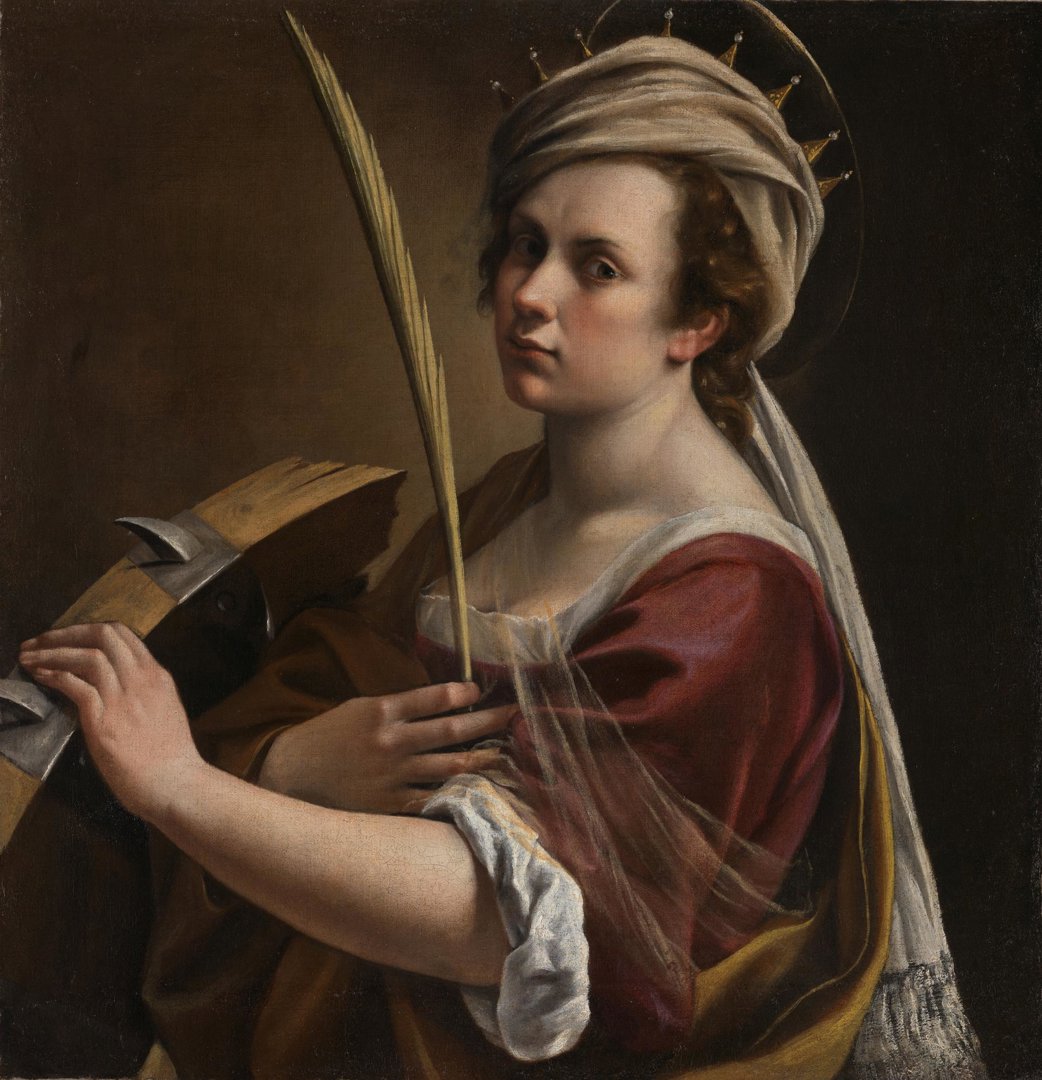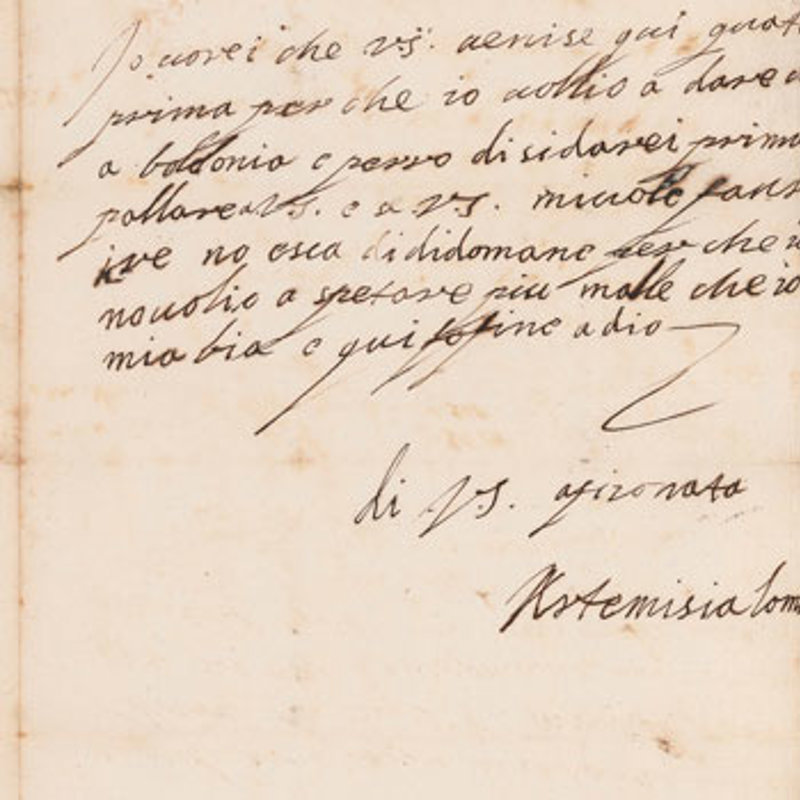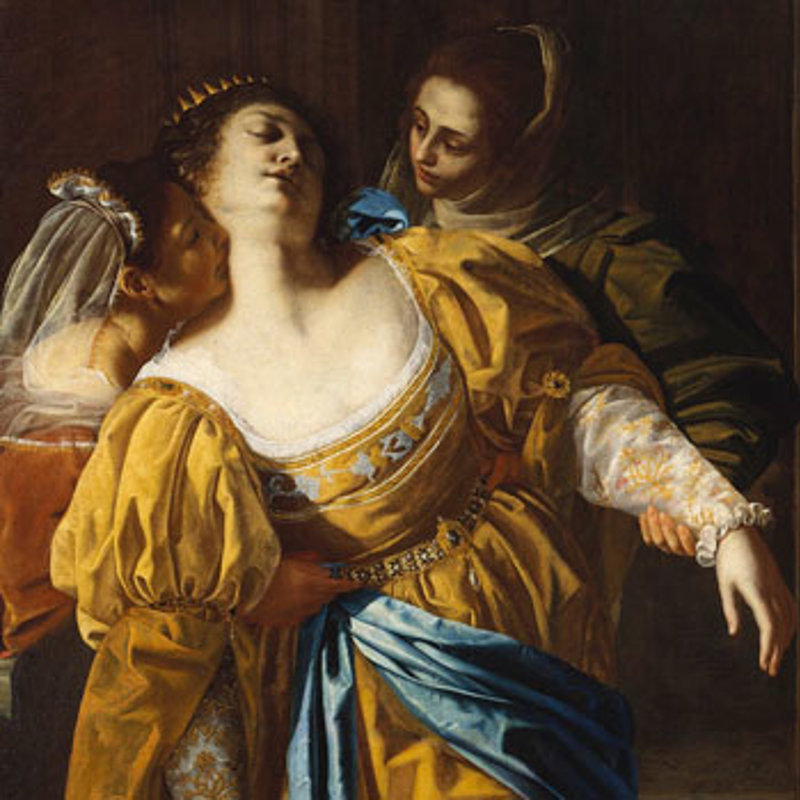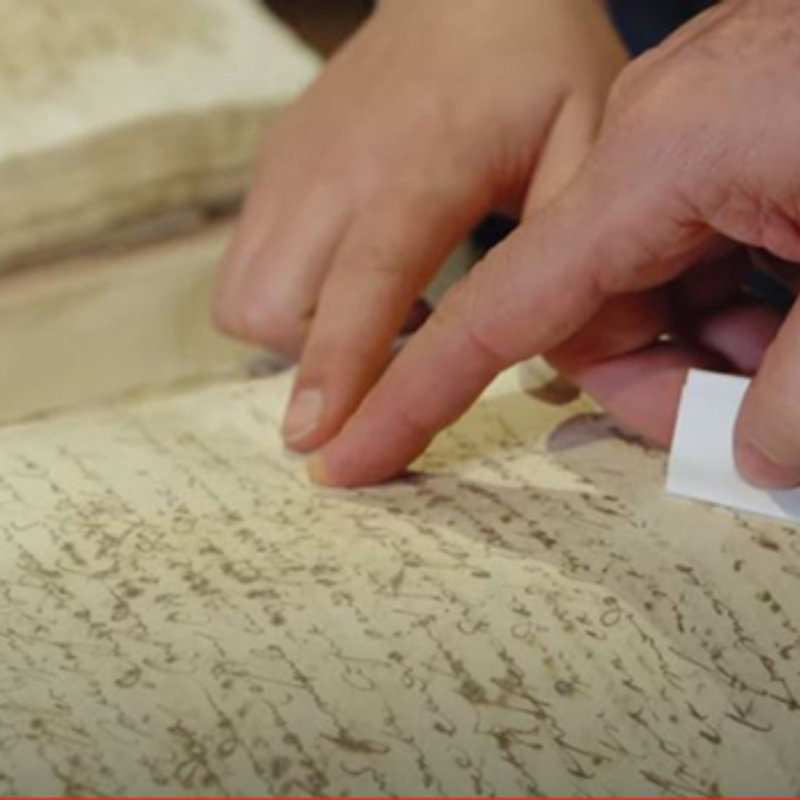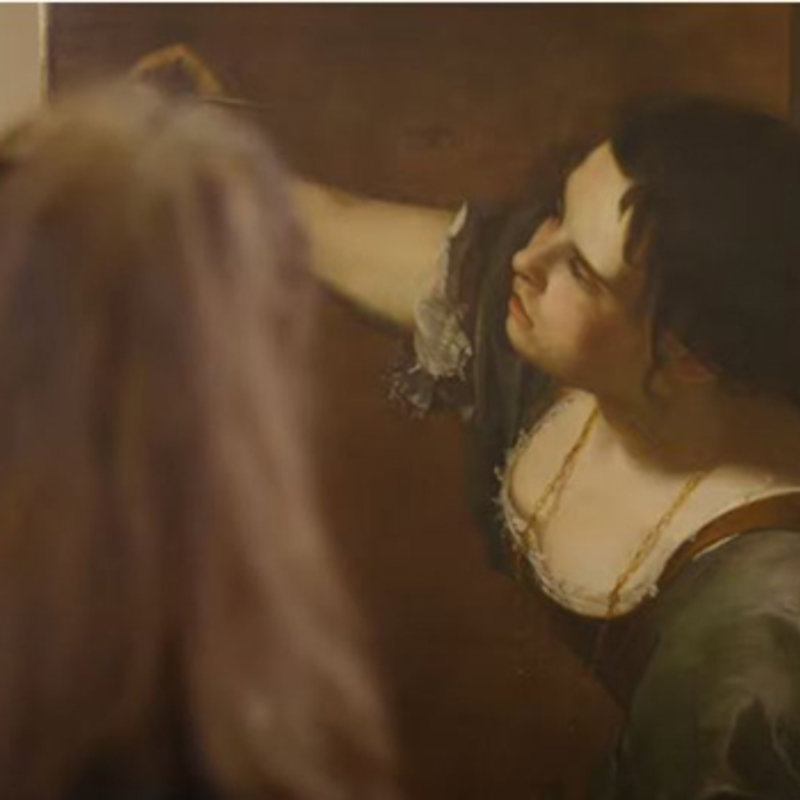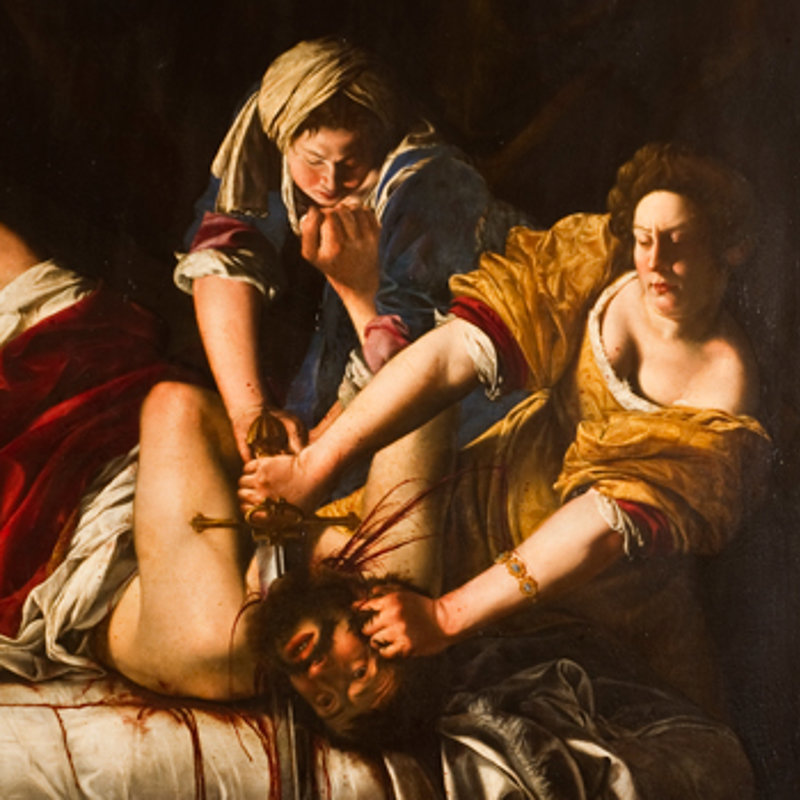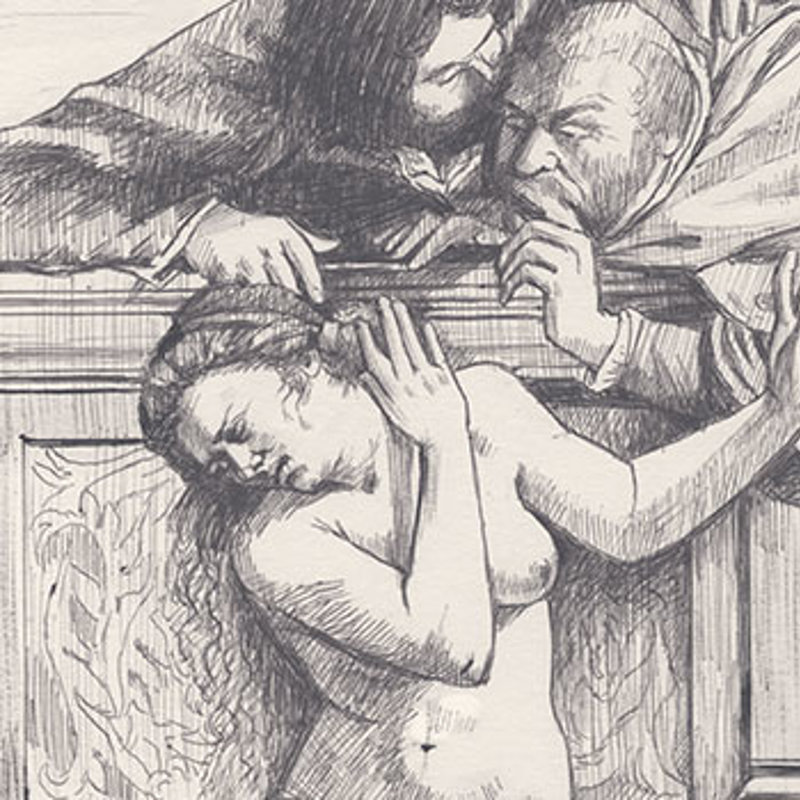"The spirit of Caesar in the soul of a woman"
Born in Rome in 1593, Artemisia was brought up by her father, the painter Orazio Gentileschi. She trained alongside her three brothers in his workshop, where she proved the most talented of all his children.
At the age of only 17, Artemisia was raped by the painter Agostino Tassi. There followed an infamous trial in 1612, in which Artemisia was subjected to gruelling questioning and torture. Tassi was found guilty, but his punishment never enforced.
The story of her rape has defined the way art historians talk about Artemisia, especially the explicitly violent scenes in which a strong heroine is the main protagonist. While Artemisia’s personal identity is closely intertwined with her artistic production, there are many other experiences which shaped both her life and her art.
Independent success
Following the trial Artemisia married a little-known Florentine artist, and left Rome for Florence. There she had five children and established herself as an independent artist, becoming the first woman to gain membership to the Academy of the Arts of Drawing in 1616.
Artemisia returned to Rome in 1620, by which point she had become an extremely sought-after artist with a “house full of cardinals and princes wanting pictures from her”. She was a follower of Caravaggio, and, like her male counterparts, tackled big historical and biblical subjects, with her own distinct style.
The last 25 years of her life were spent in Naples, where she had established a successful workshop – an extraordinary achievement considering she wasn’t permanently employed at one royal court, nor did she enjoy the protection of a wealthy, powerful or influential husband.
Self Portrait as Saint Catherine of Alexandria
In this self portrait, Artemisia shows herself in the guise of the 4th-century martyr, Saint Catherine of Alexandria. Sentenced to death by the emperor Maxentius, Catherine was bound to revolving wheels studded with iron spikes. Saved through heavenly intervention, she was later beheaded, but the instrument of her torture – a broken wheel – became her common attribute in art. Artemisia has deliberately chosen to use her own image for the martyr and depicts Saint Catherine as determined and empowered after her divine rescue.


